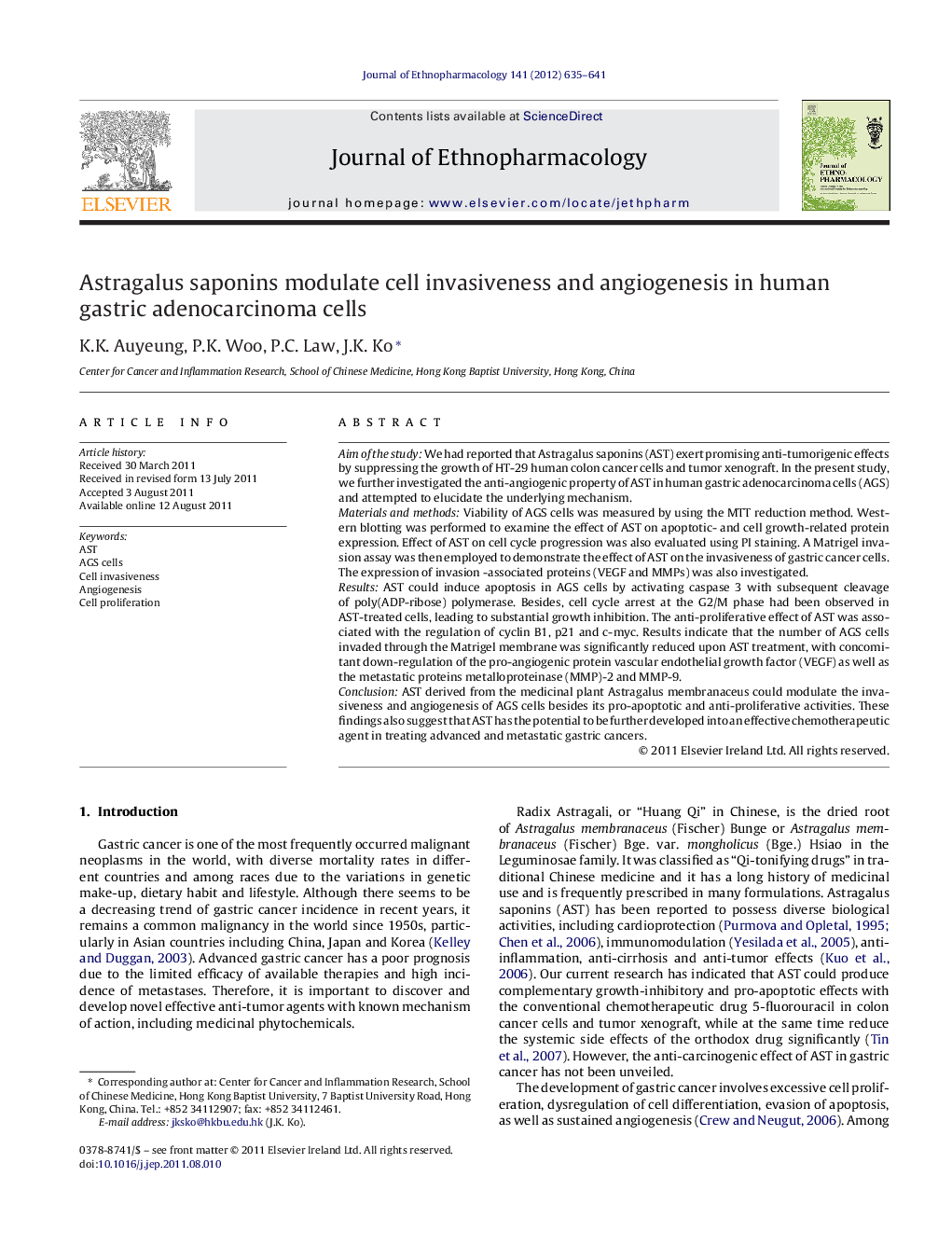| کد مقاله | کد نشریه | سال انتشار | مقاله انگلیسی | نسخه تمام متن |
|---|---|---|---|---|
| 2545599 | 1123969 | 2012 | 7 صفحه PDF | دانلود رایگان |

Aim of the studyWe had reported that Astragalus saponins (AST) exert promising anti-tumorigenic effects by suppressing the growth of HT-29 human colon cancer cells and tumor xenograft. In the present study, we further investigated the anti-angiogenic property of AST in human gastric adenocarcinoma cells (AGS) and attempted to elucidate the underlying mechanism.Materials and methodsViability of AGS cells was measured by using the MTT reduction method. Western blotting was performed to examine the effect of AST on apoptotic- and cell growth-related protein expression. Effect of AST on cell cycle progression was also evaluated using PI staining. A Matrigel invasion assay was then employed to demonstrate the effect of AST on the invasiveness of gastric cancer cells. The expression of invasion-associated proteins (VEGF and MMPs) was also investigated.ResultsAST could induce apoptosis in AGS cells by activating caspase 3 with subsequent cleavage of poly(ADP-ribose) polymerase. Besides, cell cycle arrest at the G2/M phase had been observed in AST-treated cells, leading to substantial growth inhibition. The anti-proliferative effect of AST was associated with the regulation of cyclin B1, p21 and c-myc. Results indicate that the number of AGS cells invaded through the Matrigel membrane was significantly reduced upon AST treatment, with concomitant down-regulation of the pro-angiogenic protein vascular endothelial growth factor (VEGF) as well as the metastatic proteins metalloproteinase (MMP)-2 and MMP-9.ConclusionAST derived from the medicinal plant Astragalus membranaceus could modulate the invasiveness and angiogenesis of AGS cells besides its pro-apoptotic and anti-proliferative activities. These findings also suggest that AST has the potential to be further developed into an effective chemotherapeutic agent in treating advanced and metastatic gastric cancers.
Figure optionsDownload high-quality image (82 K)Download as PowerPoint slide
Journal: Journal of Ethnopharmacology - Volume 141, Issue 2, 1 June 2012, Pages 635–641